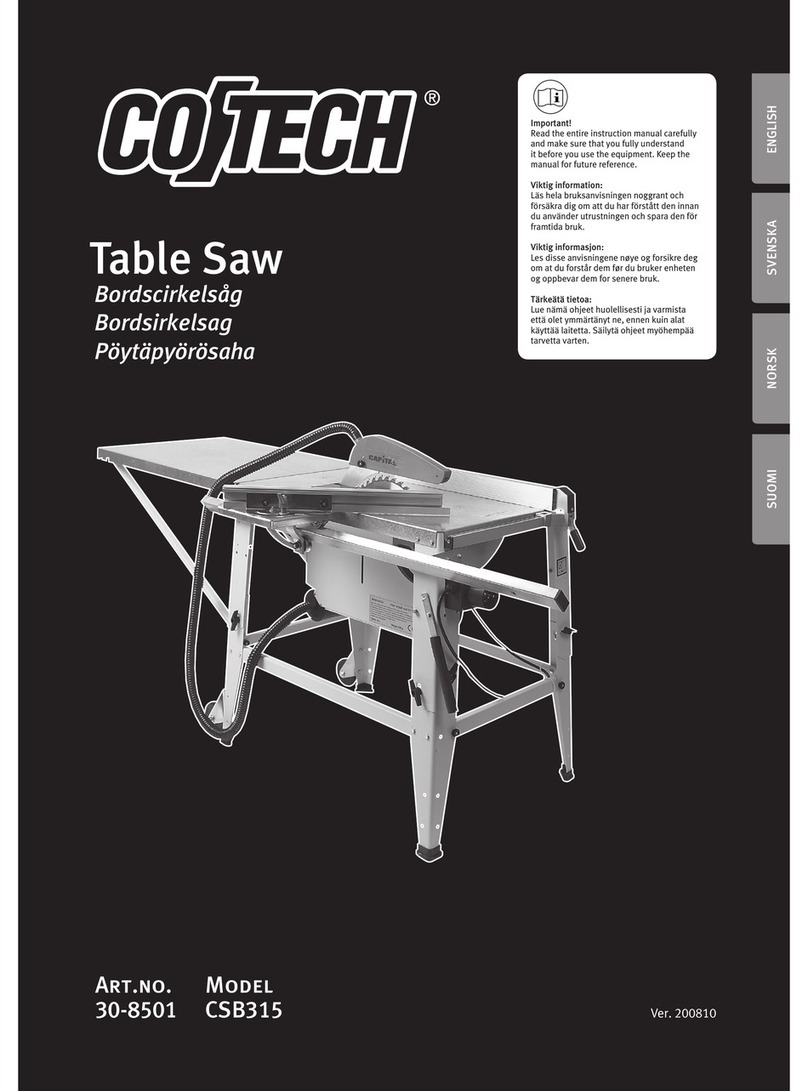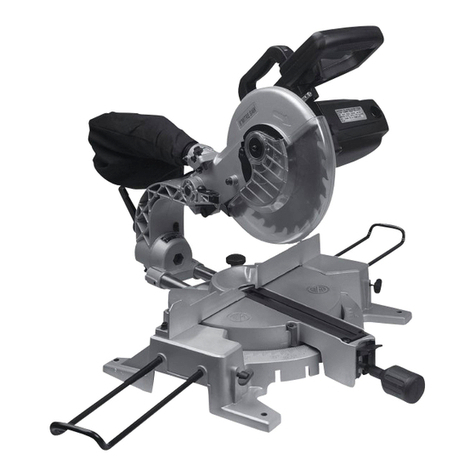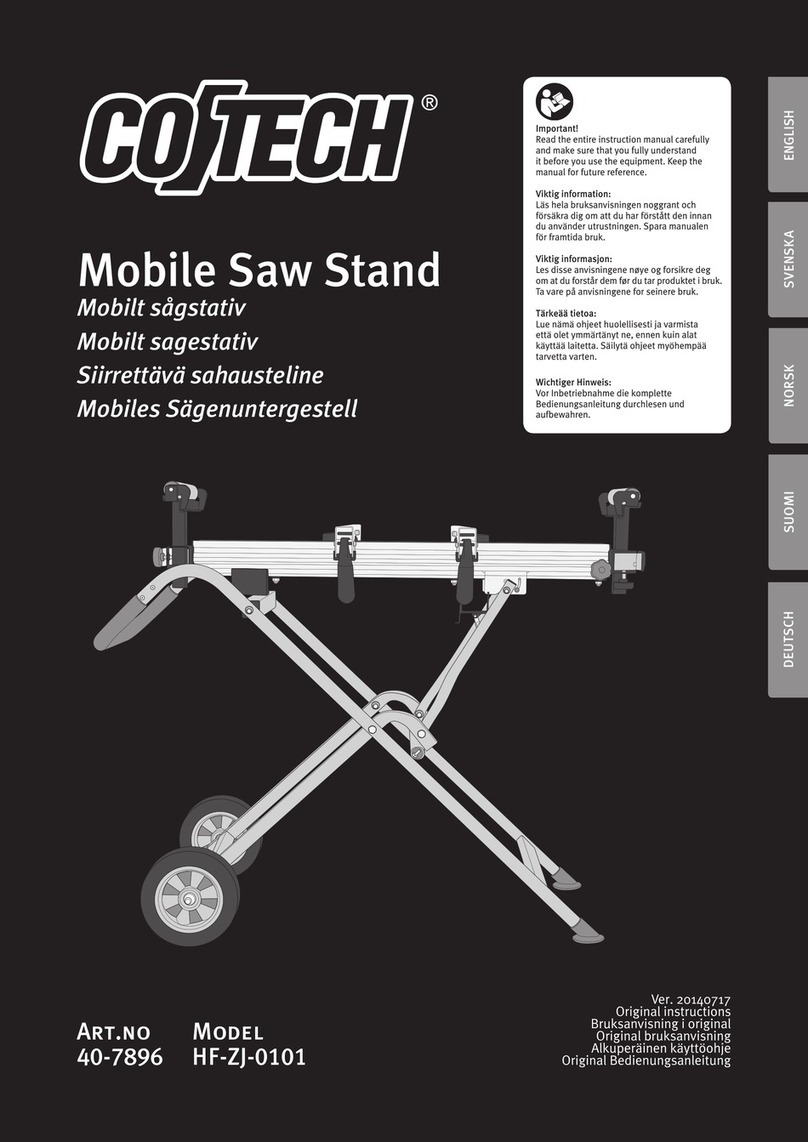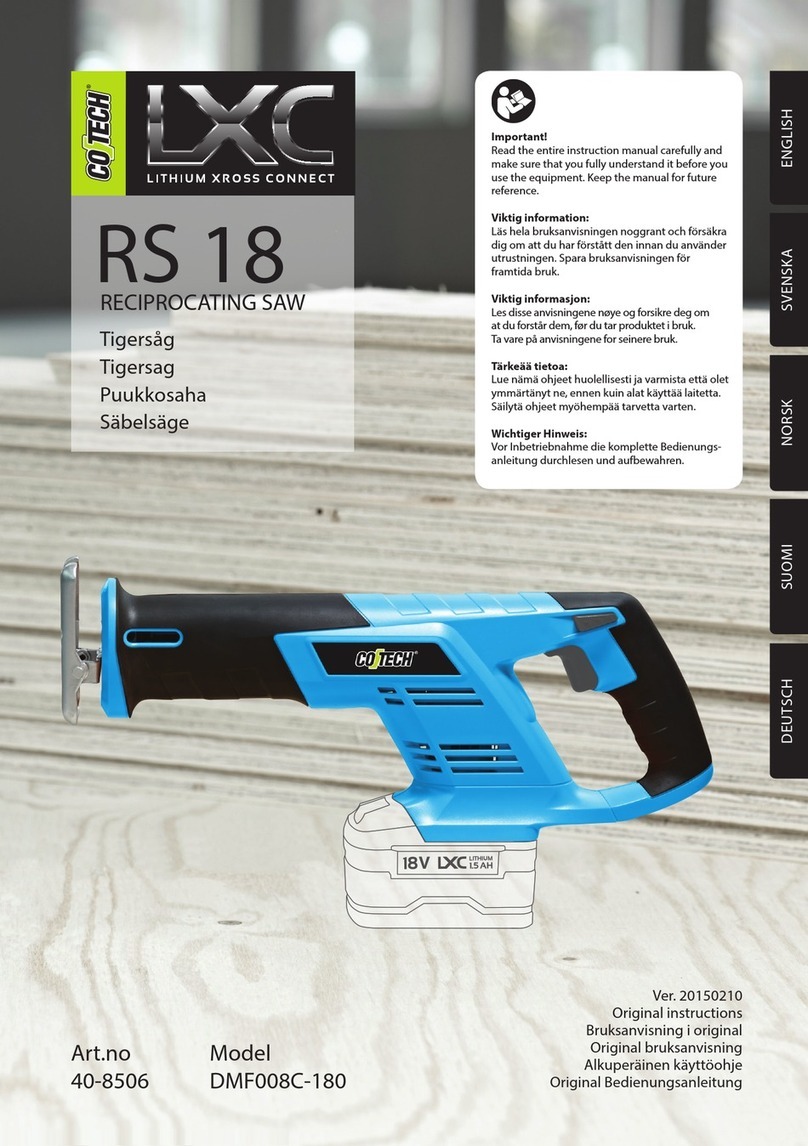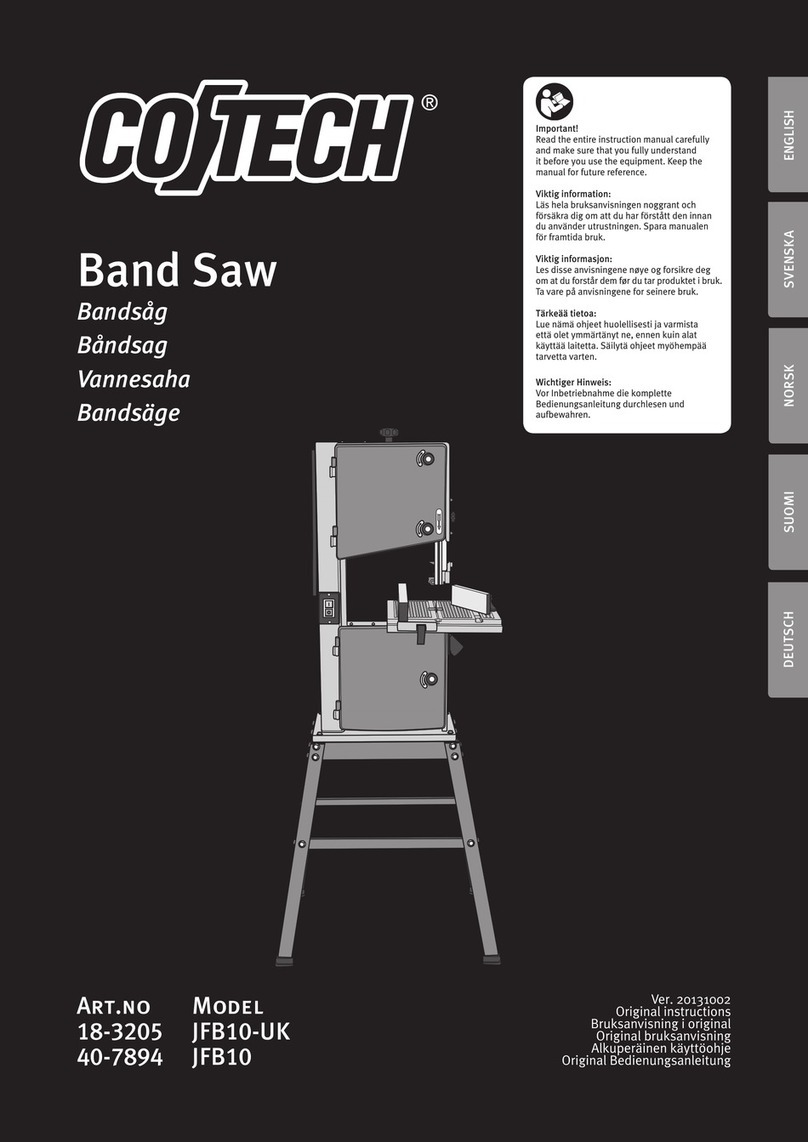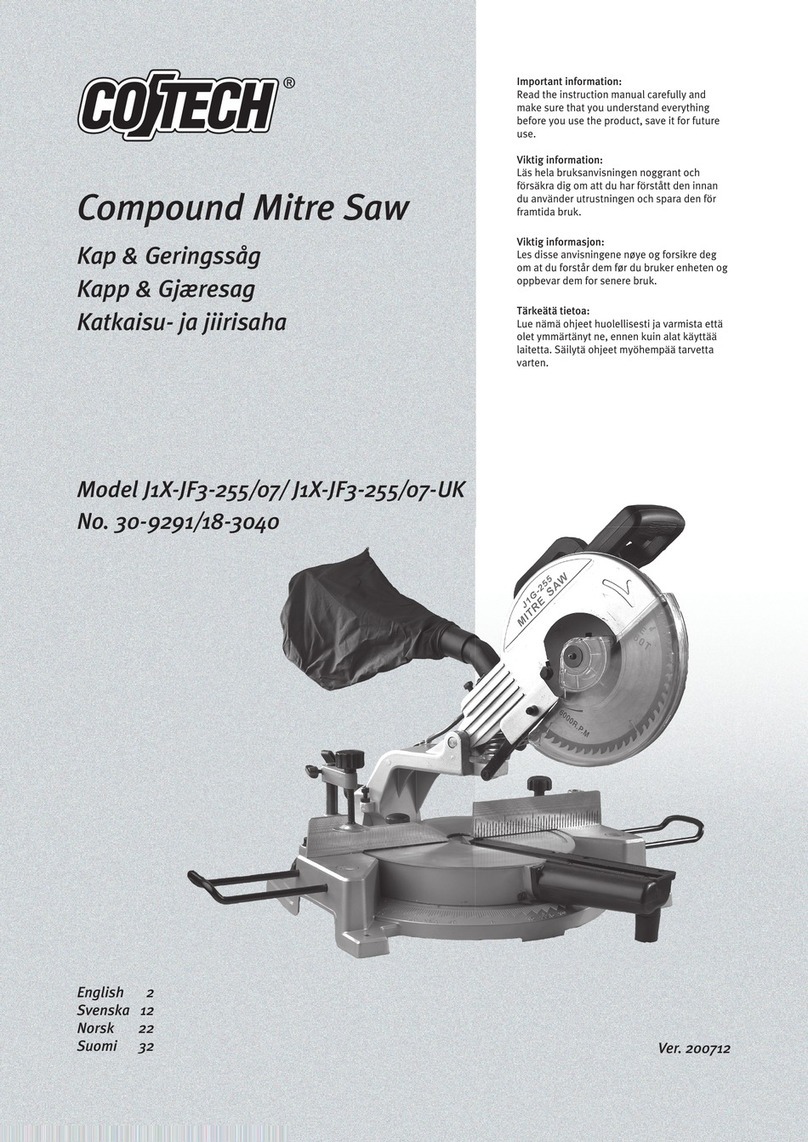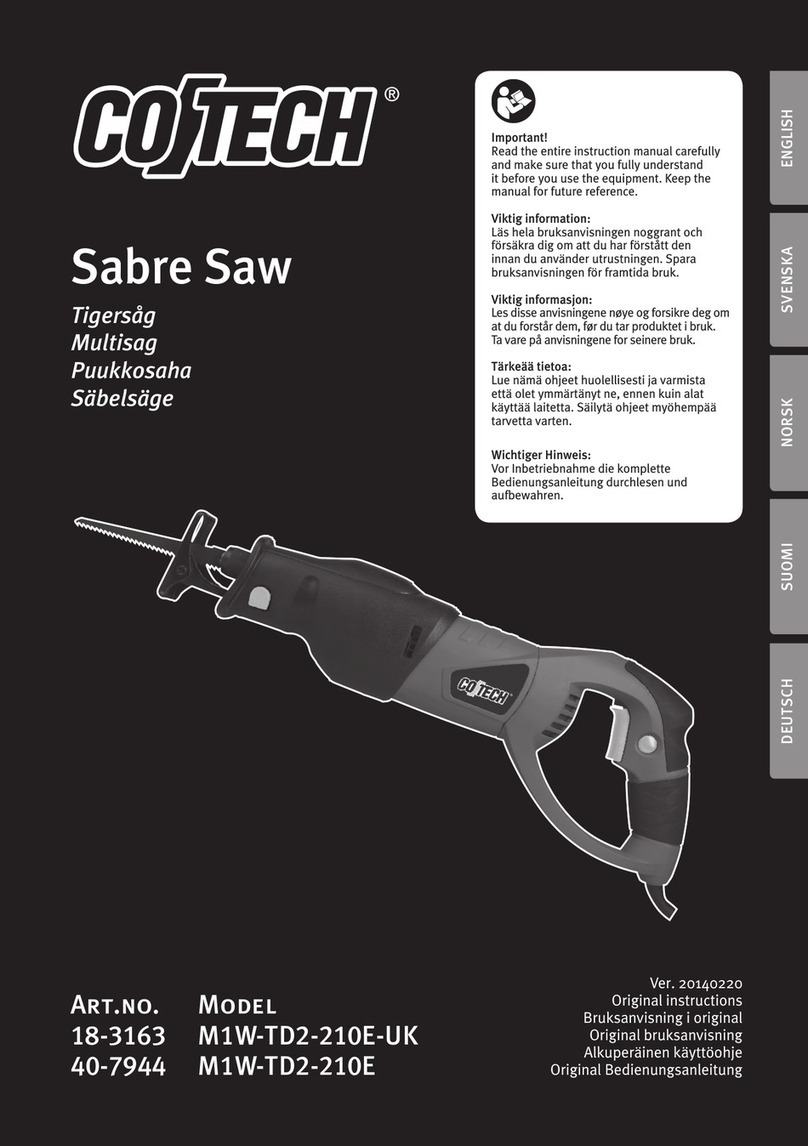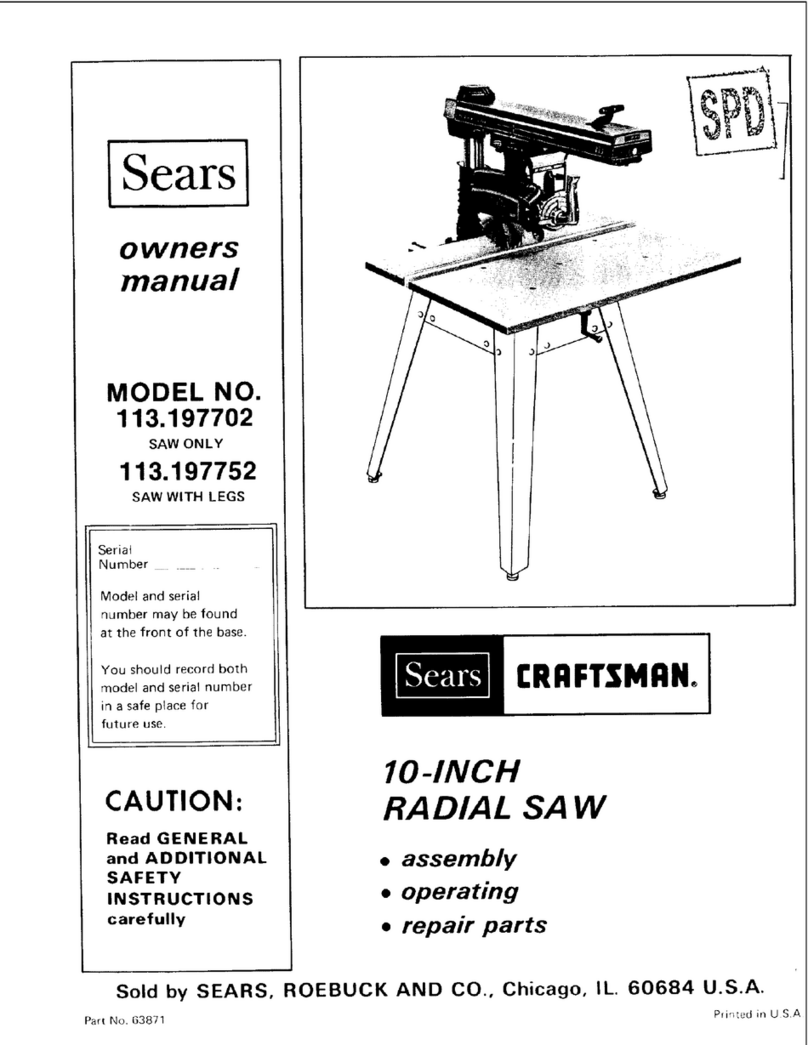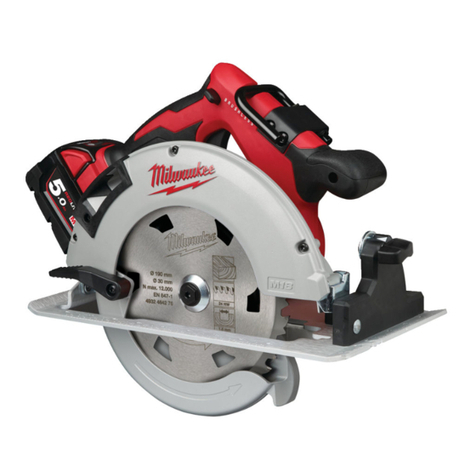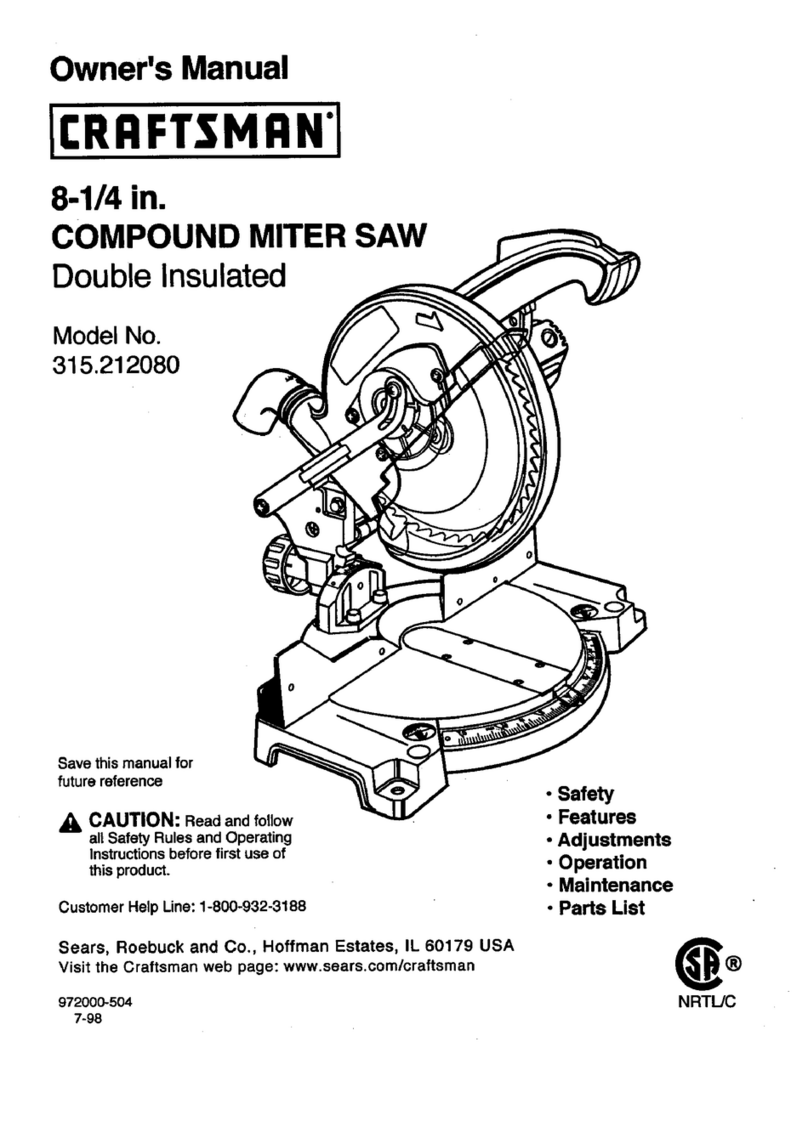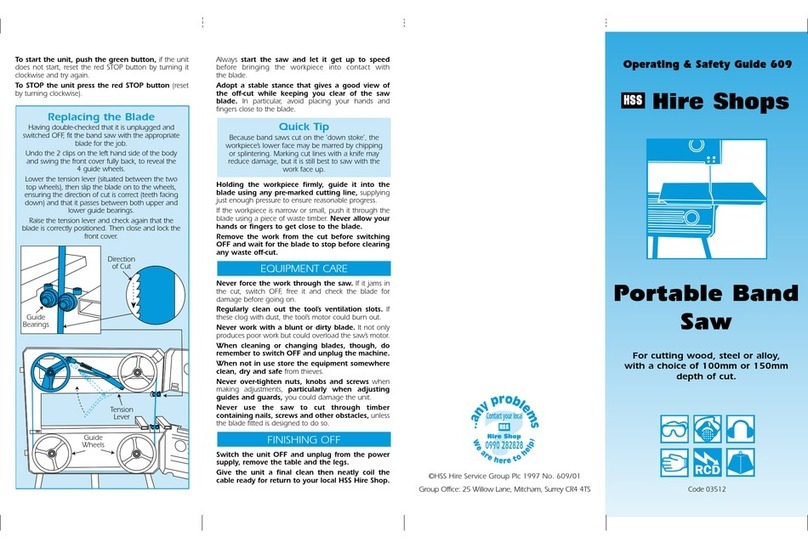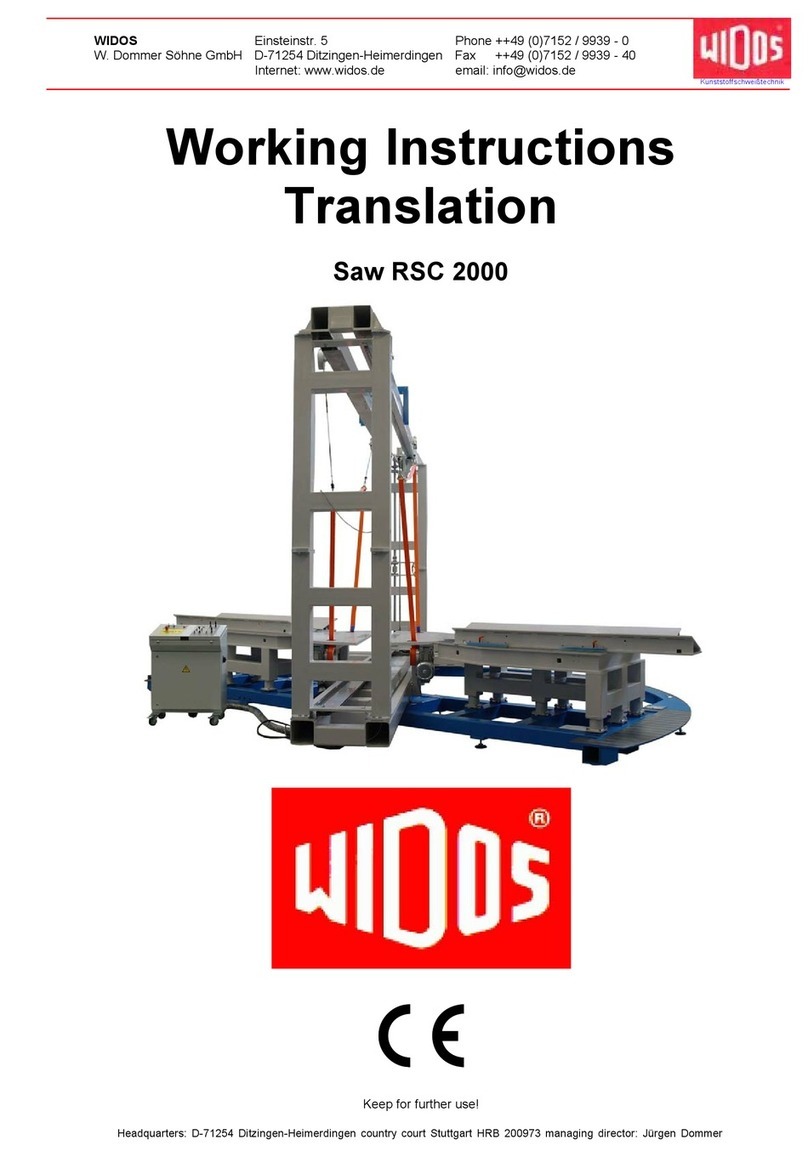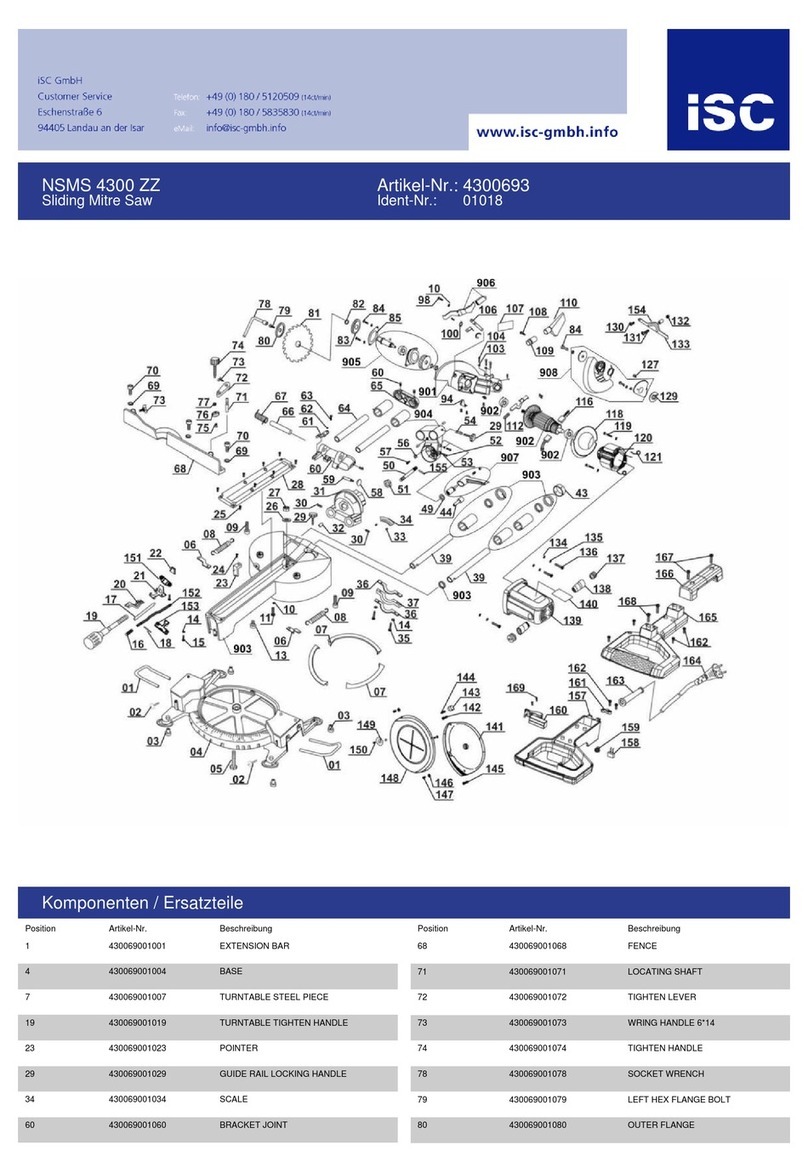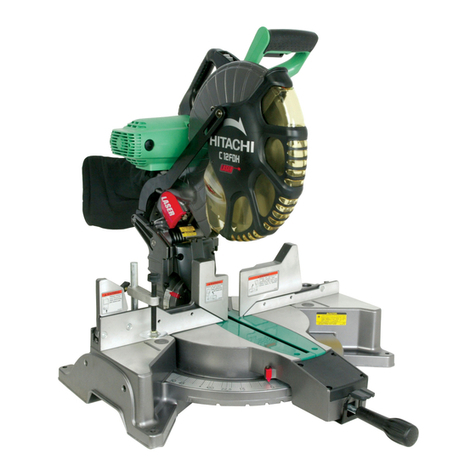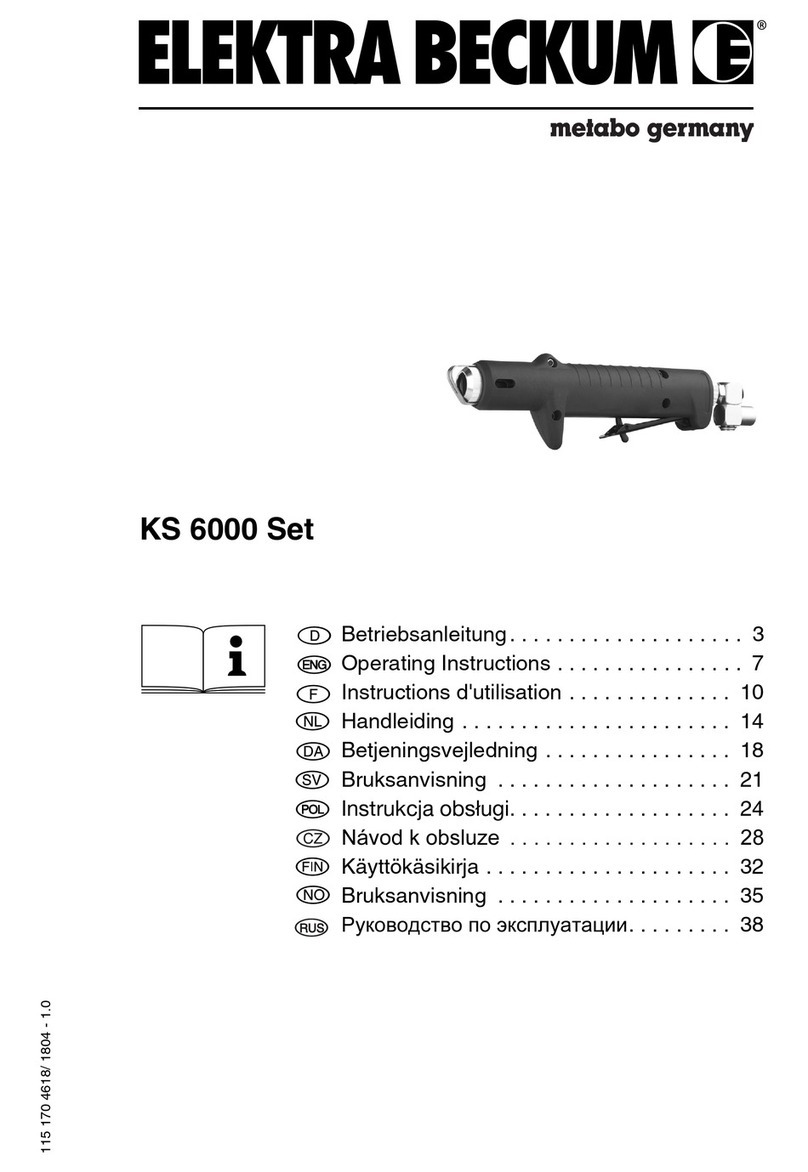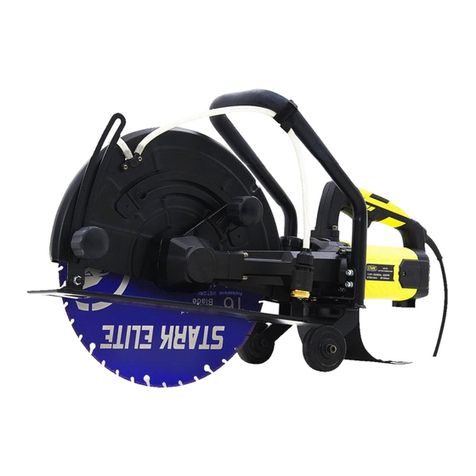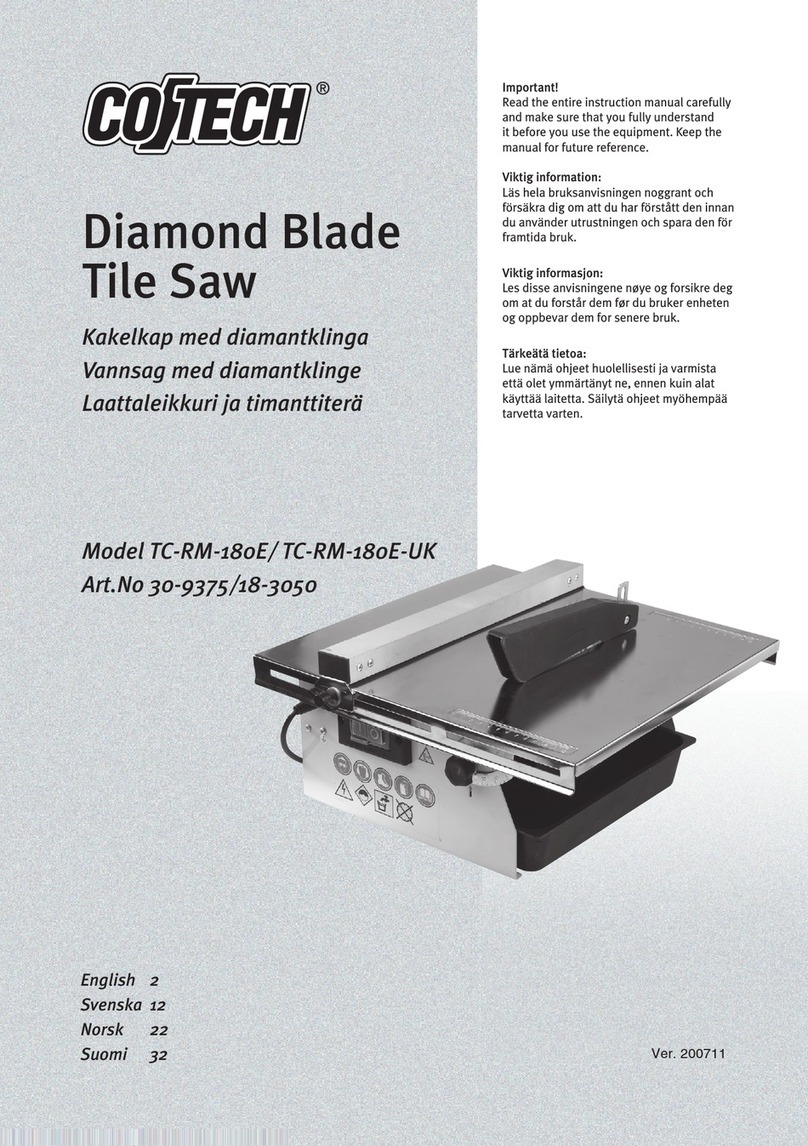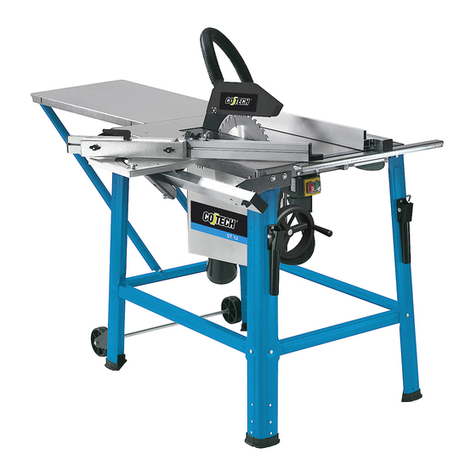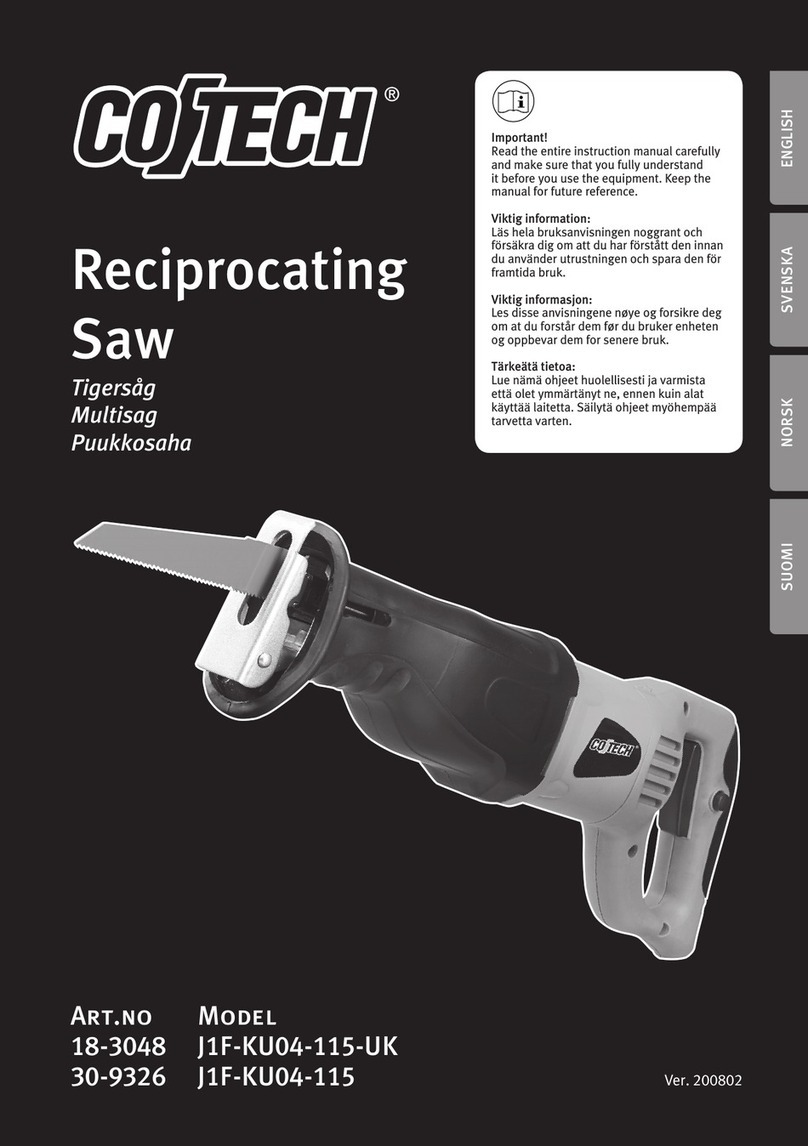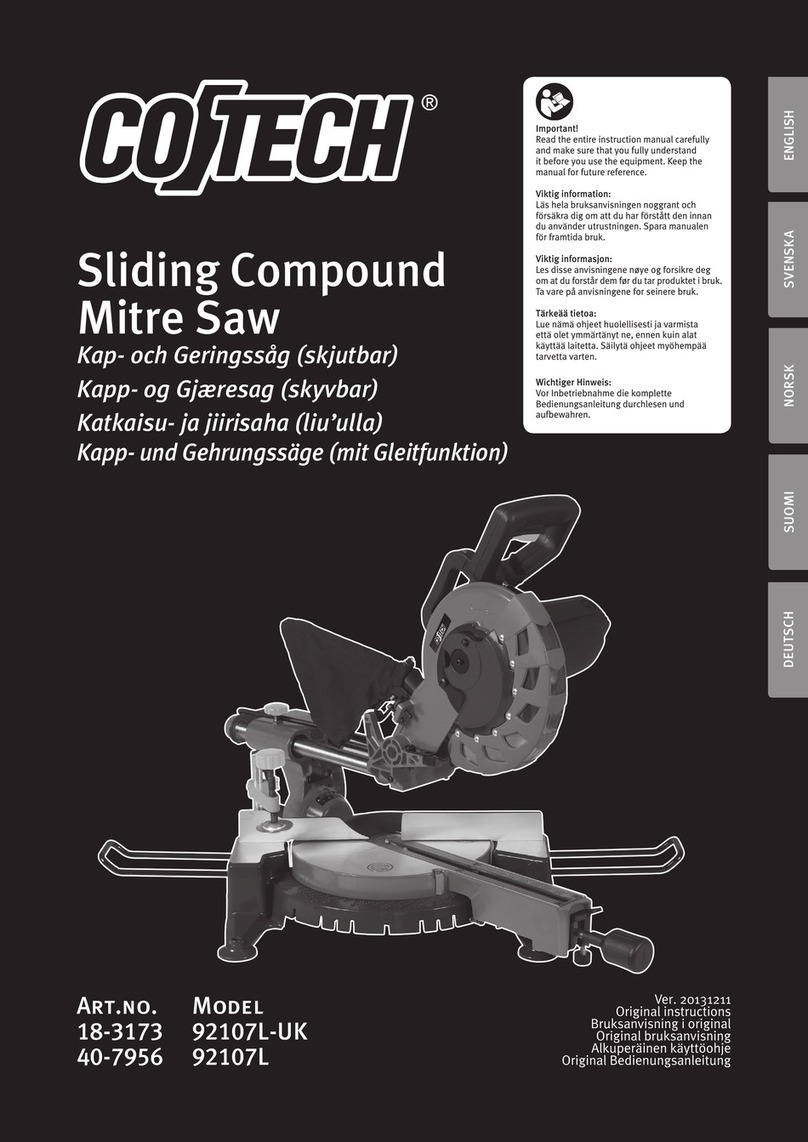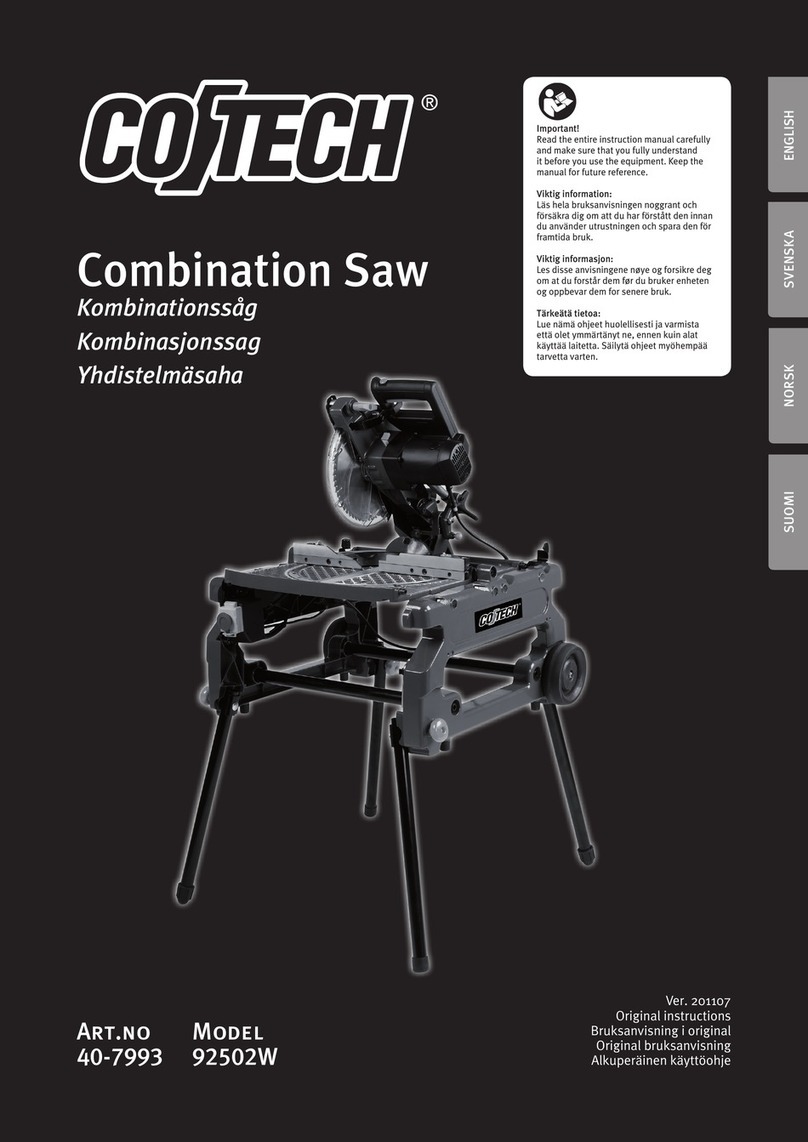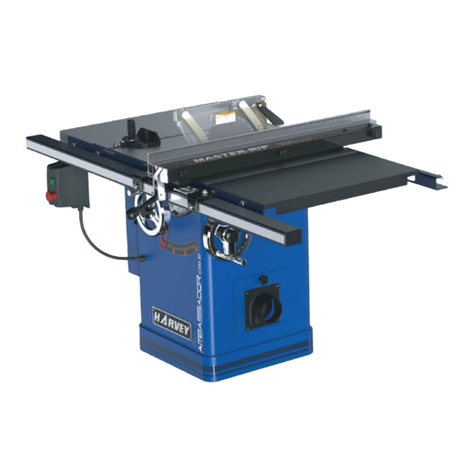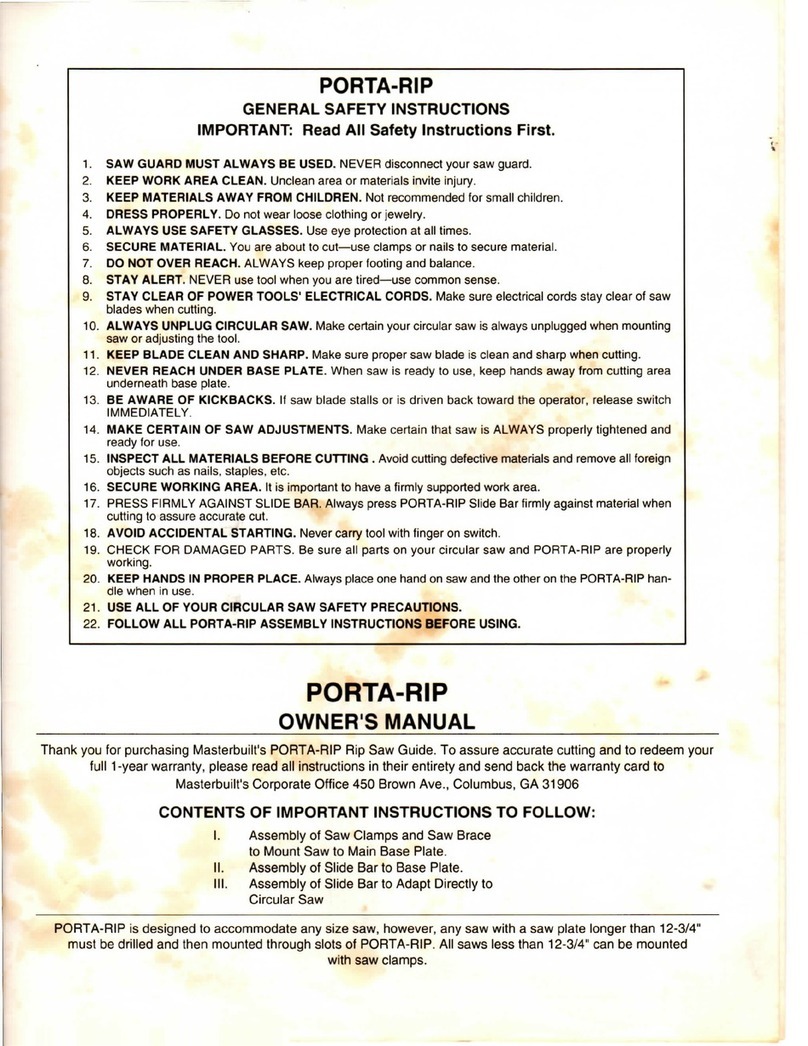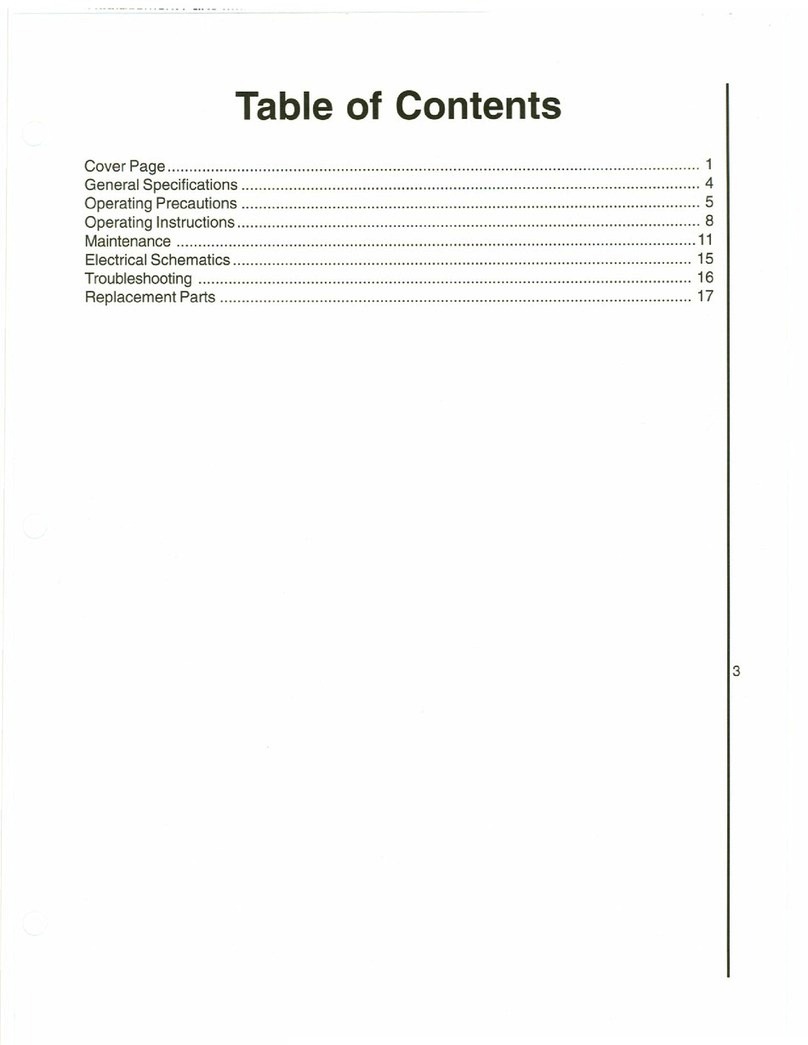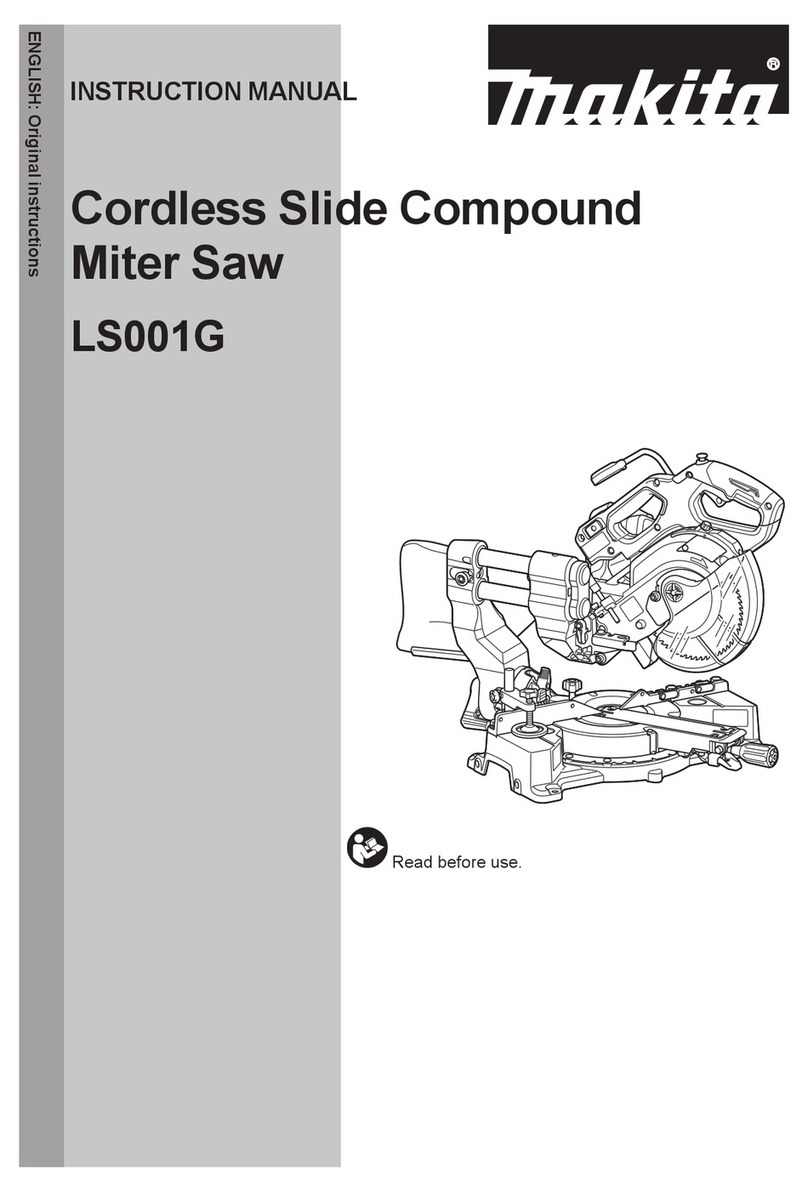
4
ENGLISH
1. Safety
1.1 Things to consider
• Working with wood can be dangerous if the correct procedures are not observed.
• Using the saw with common sense and caution will greatly reduce the risk of personal injury.
• Safety devices such as guards, push-sticks, clamps, safety goggles, dust masks and ear defenders can
never make up for bad judgement, carelessness or inattentiveness.
• N.B: you are responsible for your own safety. The saw has been designed to perform certain tasks.
We strongly recommend that the saw is not altered in any way and that it is not used for performing any task
for which it was not designed.
• Do not use the saw if you are unsure whether the saw can or should be used to perform the task you intend
to use it for.
1.2 General safety instructions for your safety and the safety of others
Always disconnect the product from the mains power supply before performing any service or adjustment.
Warning: When you are using electric hand tools the included safety instructions should be followed to avoid
risk of fire, electric shock, and personal injury.
1. Keep the work area clean and well lit. Cluttered surfaces and benches invite accidents.
2. Do not use the machine in a dangerous environment. Electrical power tools should not be used on moist
or wet surfaces or in the rain. Make sure that the work area is well lit. When working in dusty atmospheres,
make sure that the air is adequately circulated. Do not operate electrical power tools in explosive
atmospheres, such as in the presence of flammable liquids, gases or dust.
3. Avoid electric shocks. Avoid body contact with earthed or grounded surfaces such as pipes, radiators,
ranges and refrigerators when using power tools.
4. Keep children and bystanders away. Keep children and visitors at a safe distance from electrical
machinery/tools and electric cables in the workplace.
5. Store power tools out of the reach of children. When not in use, power tools should be stored locked
away in a safe place, away from children.
6. Do not force the power tool. The correct feed rate makes the work better and safer.
7. Use the correct tool for the job. Do not force a tool to perform a task that it was not designed for.
8. Wear suitable clothing. Do not wear any loose-fitting clothing, gloves, necklaces, bracelets or other
jewellery that can get caught in moving parts. Non-slip footwear is recommended. Wear a hairnet or similar
if you have long hair.
9. Always use safety glasses. Normal glasses are not tough enough to withstand impacts. Use a dust mask
or dust filter when working in dusty environments.
10. Use a dust extractor. If the machine is equipped with dust extraction equipment, ensure that it is
connected and used properly. Make sure to empty the dust bag regularly. Warning: Dust and chippings
from certain kinds of wood/material can be hazardous to your health, even after a short exposure time.
11. Do not abuse the lead. Do not carry the machine by its mains lead. Do not yank the mains lead to turn
the power off, pull the plug out instead. Make sure that the mains lead does not come into contact with
heat, oil, or sharp edges.
12. Secure the workpiece firmly. Wherever possible, use clamps or a vice. You can then operate the tool using
two hands. This is much safer than holding the workpiece in one hand.
13. Do not overreach. Make sure that you stand steady and balanced all times.
14. Look after your tools. Keep blades sharp and clean for the best and safest performance. Follow the
manual’s recommendations regarding lubrication and replacement of accessories. Check all the mains leads
regularly. If it is damaged it should be replaced by a qualified service technician. If an extension lead is used,
it too should be checked and replaced if damaged. Make sure that the machine’s handles and controls are
clean, dry and free from oil and grease.
15. Turn the power off. Pull out the plug and push in the emergency stop button before servicing or changing
any blades, drill bits, cutters or sanding discs.
16. Remove all spanners and repair tools. Make a habit of checking to make sure that the machine is free of
all spanners and tools before turning the power on.
17. Avoid accidental starting. Do not walk around with your finger on the trigger of a power tool if it is plugged
in. Make sure that the ON/OFF switch is set to OFF before plugging in any power tool.




















